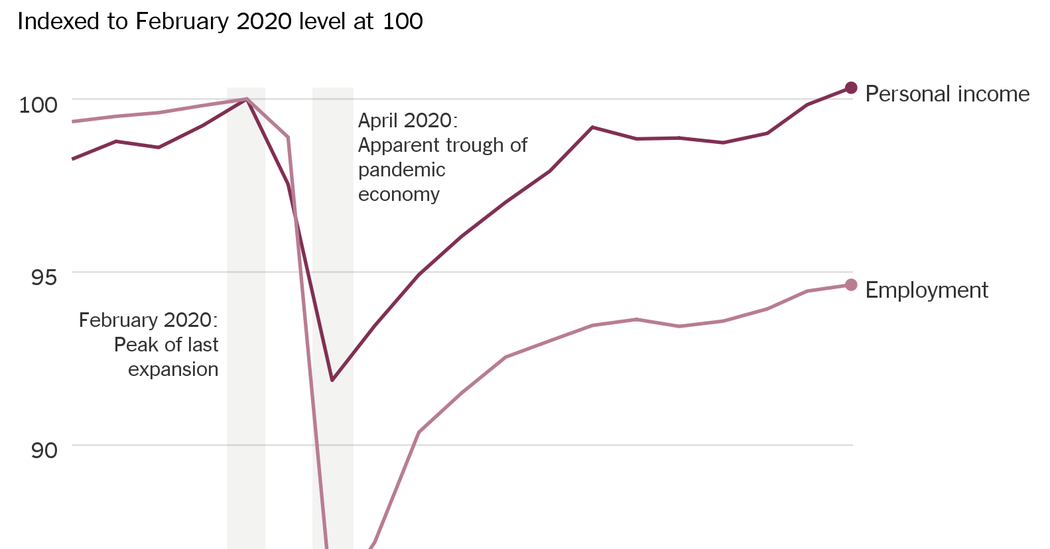ECONOMIC NEWS
The Recession Isn’t Over Till They Say It’s Over. (But Who Are They?)
“I think way back in March of 2020 there was a question of: ‘Should we call this a recession?’” said Tara Sinclair, an economist at George Washington University who studies business cycles. “Or if this is something that is going to last a few weeks, then the economy bounces right back, should it be treated as a recession or as the equivalent of a natural disaster?”Waiting to call an endpoint made sense, she said, as the committee was watching for evidence of a second wave of virus outbreak that might cause the economy to tumble again. In fact, a wave of infections in the fall dragged down employment numbers for a single month, but by most evidence it did not cause a broad or sustained contraction in economic activity.But “at this point, they are taking a particularly long time to call a particularly clear trough,” Professor Sinclair said.There’s one more wrinkle that shows how the pandemic recession is a weird one. Another common definition of recession, used especially widely outside the United States, is two straight quarters of contraction in G.D.P.Even though the actual economic contraction lasted only a few weeks in early 2020, it appears in the G.D.P. tables as having stretched over two quarters. The economy was shutting down in mid-March severely enough to cause the economy to shrink at a 5 percent annual rate in the first quarter that ended March 31.Then the continued collapse of the economy into early April meant that the second quarter, which began April 1, recorded a further 31 percent rate of shrinkage. If the pandemic had started at the beginning of a quarter rather than the end, the data would most likely have shown only a single quarter of declining G.D.P.The exact start date and end date aren’t of great importance, of course, unless you’re a chart maker focused on where the gray bars should go in an economic data visualization, or a politician looking for talking points on the campaign trail. What matters for people is how long and how severe the bad times turn out to be.
Source link













